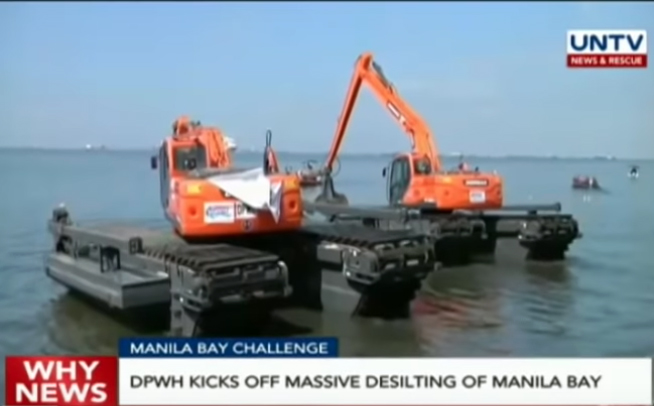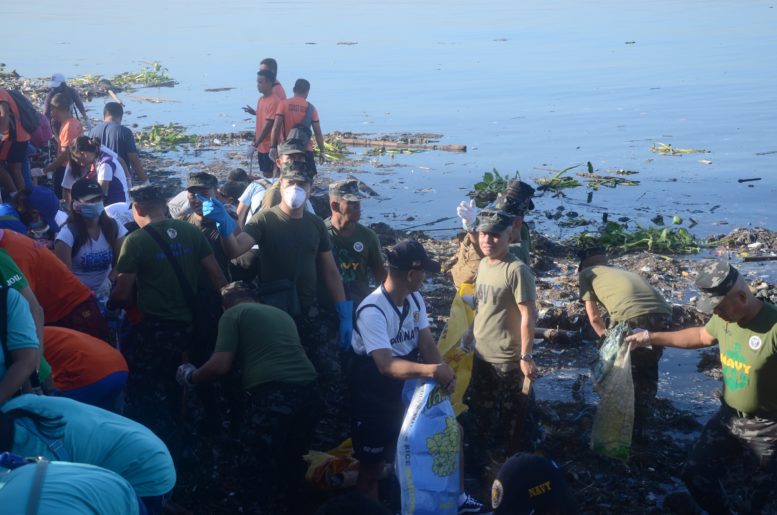The Philippine government launched early this year a coastal and marine environmental campaign to clean up, rehabilitate and preserve Manila Bay. Dubbed “Battle for Manila Bay,” the move is in compliance with a Supreme Court decision. It also tests the political will of the government.
Clearly, this noble task is aligned with Section 16 of the Constitution, to wit: “The State shall protect and promote the right of the people to a balanced and healthful ecology in accord with the rhythm and harmony of nature.”
Twenty years ago, a group of concerned citizens filed before a Regional Trial Court in Imus, Cavite a complaint against several government agencies for “the clean up, rehabilitation and protection of Manila Bay.” The grievance arose from evident heavy pollution and degradation of the ecological system of the bay, once a beautiful body of water that provided recreation, seafood supply, and livelihood to the coastal residents.
In 2002, the trial court ordered the respondent agencies to act on the petition. Instead, they elevated the decision to the Court of Appeals. Three years later, in 2005, the Appellate court sustained the Lower court’s verdict. In their final attempt to vent their side, the agencies went up to the Supreme Court.
In December 2008, the high court validated the lower court’s decisions and ordered the government to submit quarterly reports to the court-organized Manila Bay Advisory Committee (MBAC) chaired by one of the justices. As an initial compliance, the government created the Manila Bay Coordinating Committee (MBCC) to synchronize plans and actions. For some reason, the MBCC held its first meeting in 2009, and the second only in 2017.
The high court further tasked the Department of Environment and Natural Resources (DENR) to implement its Operational Plan for Manila Bay Coastal Strategy (OPMBCS) that calls for managing liquid waste, solid waste, informal settler families and illegal structures, habitat and resource, and enhancing partnerships and governance. The MBAC approved the enhanced strategic plan (OPMBCS) in 2017.
Two years later, on 27-January-2019, DENR spearheaded the Manila Bay coastal and environmental campaign with the participation of various government agencies and non-governmental organizations. The immediate task is to make some portions of the bay safe for public swimming in December. This entails removing garbage and debris, and closing down commercial establishments surrounding the bay that are not compliant with liquid waste disposal rules.
The government estimated the fund requirements at Php42.95B for the clean up and relocation of some 220,000 informal settler families living along the numerous tributaries of the bay.
Three weeks later, on 19-February-2019, the President issued Administrative Order No. 16 directing both the National Government Agencies (NGA) and the Local Government Units (LGU) to “expedite the rehabilitation and restoration of the coastal and marine ecosystem of Manila Bay.” It created a mechanism, the Manila Bay Task Force (MBTF), to achieve the broad function envisioned by the Order. This executive issuance focused on the relocation of informal settler families, information drive, and social welfare and livelihood.
The principal actors in the campaign are the DENR and the Department of Interior and Local Governments (DILG). DENR implements the national environmental laws while DILG, through the local government units (LGUs), enforces devolved environmental rules and regulations. With clear objectives to be achieved, a dedicated task force, and a proposed budget, the government appears ready to pursue the formidable goal.
But some quarters are not fully convinced that such endeavor would succeed in the near future because of lack of consultations with many stakeholders. Some legislators are calling the suspension until a detailed action plan is shown to the public. Another group stated that the budget and the time frame are inadequate considering the magnitude of the campaign.
For example, the DENR estimated that only 10,000 informal settler families annually may be relocated out of the estimated total of 220,000. This translates to 22 years of resettlement, assuming that other unauthorized parties will not occupy the vacated areas. Also, the Administrative Order did not include any provision on funds allocation. Moreover, some studies reveal that the state of environmental and natural resources (ENR) devolution to the LGUs is “partial and at worst miniscule and insignificant,” and that “ENR laws are weakly enforced.”
The Philippines ranked 66th out of 180 nations in the 2016 Environmental Performance Index (EPI). In the 2018 EPI, the country deteriorated, and ranked 82nd.
The opening salvo of the “Battle for Manila Bay” starting January 27 attracted attention of various groups and some LGUs. Of note are offers from several top business tycoons to help in the clean up, the joint de-silting project of the City of Manila, with its Sagip Manila Bay Program, and the Department of Public Works and Highways (DPWH), and garbage removal by thousands of civilian volunteers, soldiers and other uniformed personnel. This joint project involves dredging and removal of 225,000 cubic meters of the heavily silted bottom of a 1.5-kilometer coastline along the bay walk between the US Embassy and the Yacht Basin.
Protecting the marine and coastal environment depends on several factors: geographical location and size, government leaders’ determination, and the attitude of the people. Examining the political, economic, social and environmental aspects and allowing participation of private cause-oriented groups will certainly contribute to the action plan.
In the past 6 years, the private sector has initiated at least two separate clean up drives: Estero de Paco in Manila and Maningning Creek in Taytay, Rizal. Between the two, the latter brought some lessons worth looking into.
In recovering the 3-kilometer long Maningning Creek beginning 2012, the “creek saviors” took a few years investigating the area and conferring with the residents and prospective sponsors. Once population support was secured, the “creek saviors” implemented their action plan by using “bokashi” balls and collecting floating and partially submerged garbage on a regular basis. Result: cleaner water, elimination of foul odor and more solid river floor. Residents consequently planted the banks with bamboos and vegetables that provided livelihood.

Photo Credit: UNTV
Given the vast area of Manila Bay itself (187,000 hectares of water surface and 190 kilometers of coastline) and the 17 river systems that connects to it, and the large number of population and LGUs around it, the MBTF has to revisit time and again its campaign plan. It should continue frequent interaction with the environmental law enforcers, the local leaders and the informal settlers families. The private institutions, including the media, are strong partners whose talents, skills and finances could expedite the attainment of the goal. Once clean up and rehabilitation tasks are accomplished, government authorities should consider, as part of its preservation crusade, the complete ban of reclamation of any portion of Manila Bay. The experiences of other countries on reclamation projects point to a multitude of negative effects on human activities from general public safety to ecosystems.
The future generations deserve better and lasting benefits from a clean and healthy Manila Bay!
